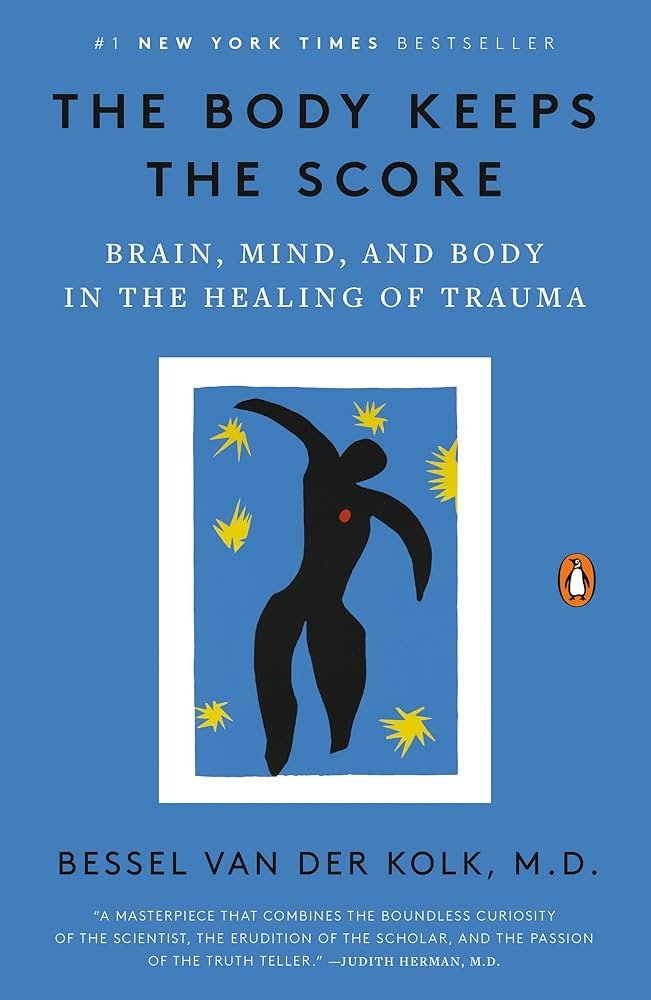The Body Keeps the Score
The Body Keeps the Score
In “The Body Keeps the Score,” Bessel van der Kolk argues all treatment for PTSD must promote the integration of one's mind with one's body. More specifically, those diagnosed with PTSD must learn to regulate their own physiology through breathing, moving, and touch in order to heal. Without incorporating somatic experiences into the treatment of patients diagnosed with PTSD, Kolk states that patients will continue to be trapped in fight/flight situations in which they feel helpless and become unable to establish healthier ways of living.
Oftentimes in patients with trauma, Kolk finds that traumatic experiences often follow patients over time by manifesting into unhealthy coping mechanisms such as amnesia, disassociation, or self-harm. In the case of amnesia, people remember either too little or too much. This is because post-traumatic memories are different from normal memories in that they are static and scattered. These memories can be triggered by specific real-time instances. With disassociation, patients disassociate from traumatic instances by adopting personalities that have “stopped progressing at a certain point or have personalities that cannot enlarge any more by the addition or assimilation of new elements.” This coping mechanism is particularly concerning because it disallows people from assimilating new and healthier memories in their brain and results in cognitive as well as personality decline. Others may resort to self-harm and suffer from mood dysregulation. Their moods can rapidly change from one mode to another, which biologically stems from a body that secretes stress hormones in order to combat perceived threats. As a result, the body is in a constant state of high alert and in order to relieve tension, patients sometimes resort to self harm.
Kolk introduces EDMR or eye movement therapy, where a person follows a person's finger with their eyes while recalling traumatic incidents as a way to undo these unhealthy coping mechanisms caused by PTSD. By asking patients to relive their traumas by focusing on a particularly painful memory while following a hand that moves back and forth, biological mechanisms involved in REM sleep are triggered. This is important because sleep plays a critical role in the integration of memories and can overtime change the emotional intensity of certain memories. According to Kolk, EDMR allows patients to forge new relationships with traumatic memories and come to terms with them.
Kolk also states that yoga serves as a great tool for maintaining a healthy heart rate variability, which measures the relationship between the sympathetic and parasympathetic system. When the relationship between both systems are stable, we have more control over our impulses and emotions. Others with poorly balanced systems are often hijacked by their emotions and feel physical discomfort more frequently. Yoga, which focuses on breathing practices, helps those with poor heart rate variability focus on whether their heart rate is too fast or slow and bring it back to a state where their heart and breathing are more in sync. When this occurs, our breathing can improve along with anger, depression, anxiety and other problems related to high blood pressure. Yoga ultimately allows us to learn a state of self-regulation. By utilizing breathing techniques, patients with trauma become more in tune with their mind-body-connection and have more control over the traumas that inflict them.
